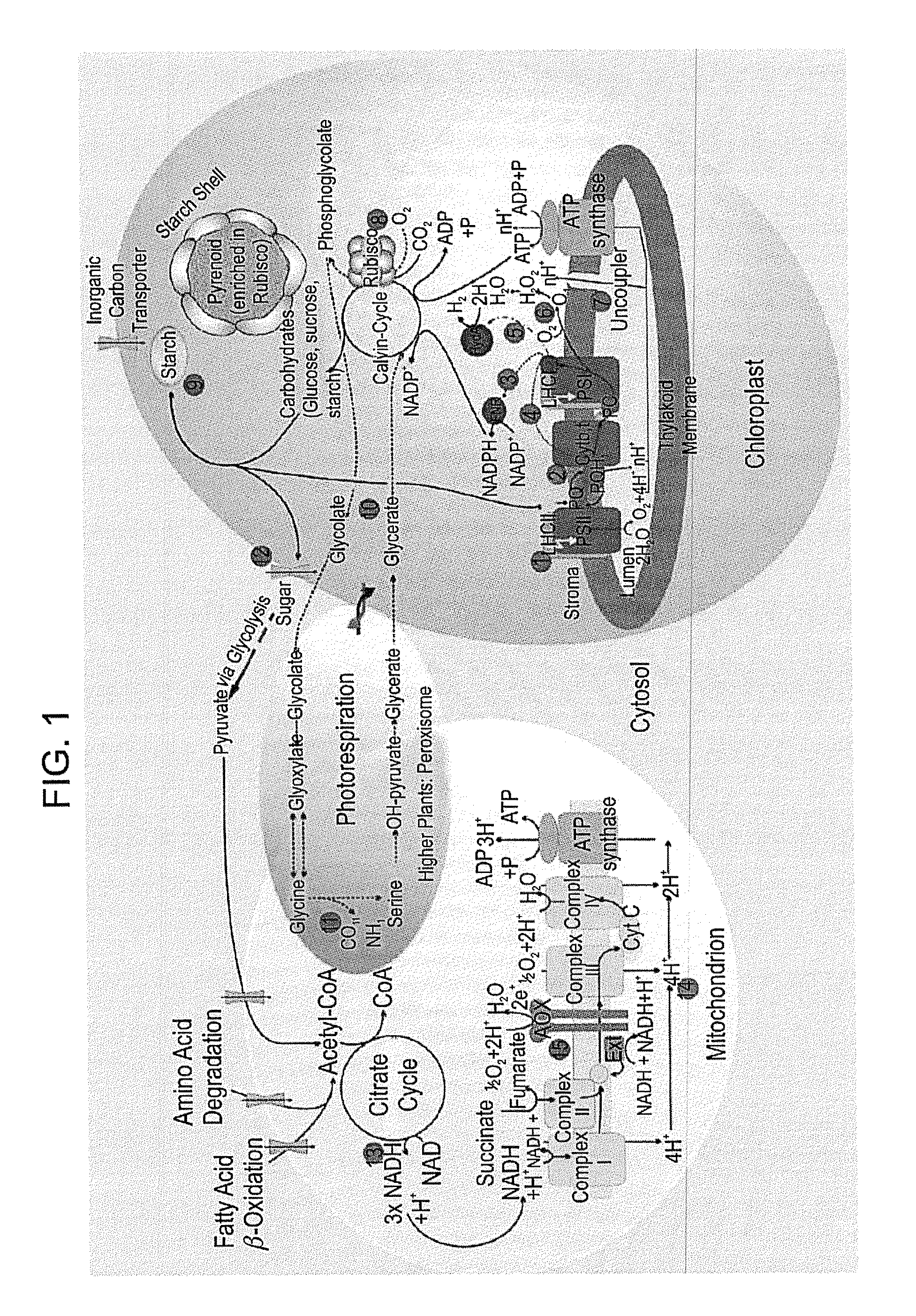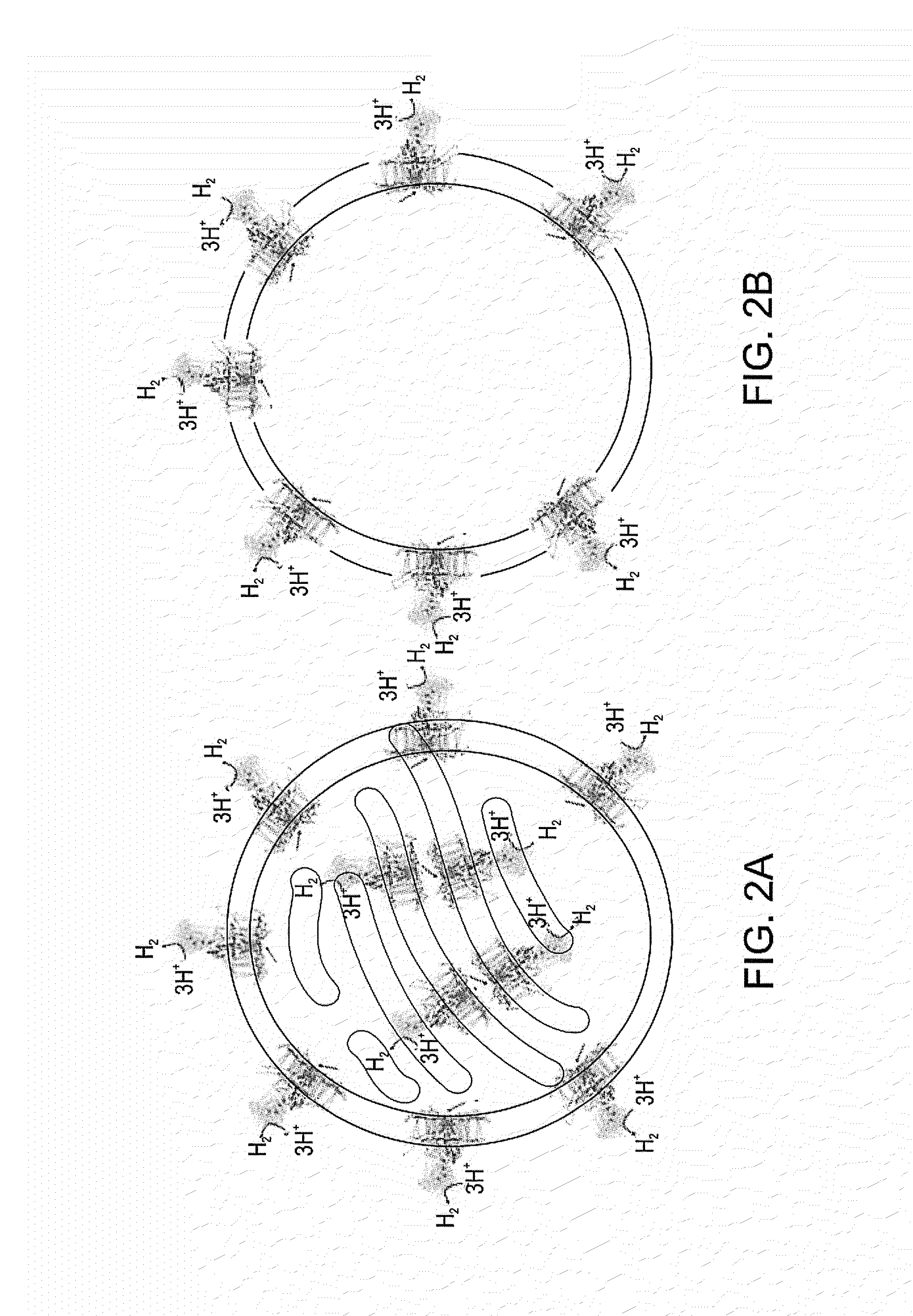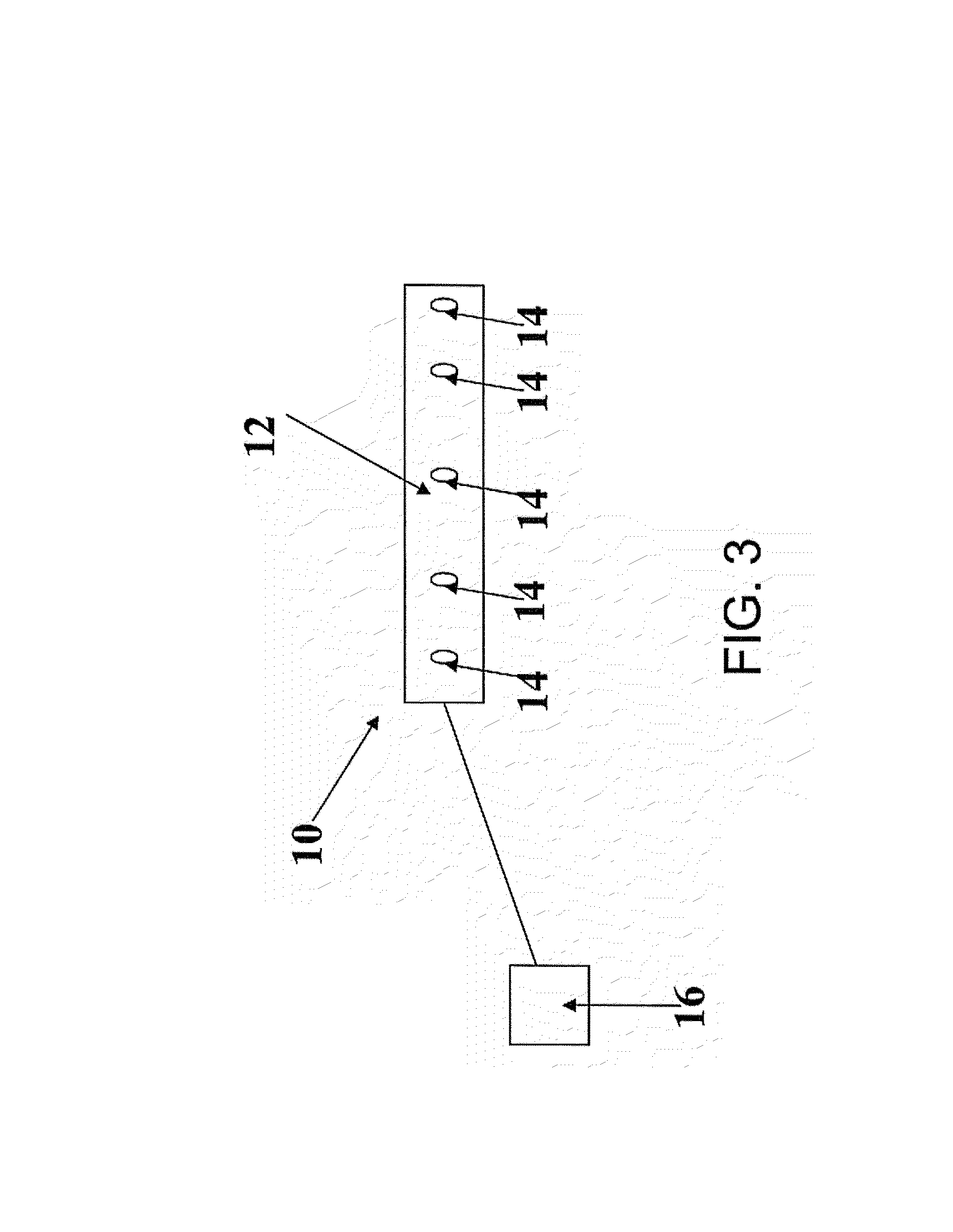Photocatalytic hydrogen production and polypeptides capable of same
a photocatalytic and hydrogen production technology, applied in the field of photocatalytic hydrogen production and polypeptides capable of same, can solve the problems of insufficient hydrogen generation in these organisms, less energy than non-renewable energy sources, and high cost of hydrogen production,
- Summary
- Abstract
- Description
- Claims
- Application Information
AI Technical Summary
Benefits of technology
Problems solved by technology
Method used
Image
Examples
example 1
Cloning, Expression, Purification and Analysis of Hydrogenase-Ferredoxin Recombinant Fusion Proteins
[0218]Materials and Methods
[0219]Cloning
[0220]A clone of ferredoxin (petF) was amplified from Synechocystis pcc 6803 genome using the following primers:
[0221]
(SEQ ID NO: 7)Forward:ATCTATGGCATCCTATACCG;and(SEQ ID NO: 8)Reverse to plant:TTATGCGGTGAGCTCTTCTTCTTTGTGGGTTTCAATG
[0222]In addition the C-terminus of the native cyanobacterial ferredoxin was replaced with the higher plant ferredoxin C-terminus using the “reverse to plant primer—SEQ ID NO: 8”.
[0223]A HydA1 gene of Chlamydomonas reinhardtii was expressed essentially as described in (King et al., 2006, J. Bacterilogy: 2163-2172).
[0224]The ferredoxin petF was fused to the C-terminus of the target hydrogenase HydA1 according to the free space available in the PSI ferredoxin binding site of plant PSI utilizing the published structures of PSI, ferredoxin and hydrogenase [Peters et al., 1998, Science, 282, 4 December; Nicolet et al., 199...
PUM
| Property | Measurement | Unit |
|---|---|---|
| temperature | aaaaa | aaaaa |
| temperature | aaaaa | aaaaa |
| pH | aaaaa | aaaaa |
Abstract
Description
Claims
Application Information
 Login to View More
Login to View More - R&D
- Intellectual Property
- Life Sciences
- Materials
- Tech Scout
- Unparalleled Data Quality
- Higher Quality Content
- 60% Fewer Hallucinations
Browse by: Latest US Patents, China's latest patents, Technical Efficacy Thesaurus, Application Domain, Technology Topic, Popular Technical Reports.
© 2025 PatSnap. All rights reserved.Legal|Privacy policy|Modern Slavery Act Transparency Statement|Sitemap|About US| Contact US: help@patsnap.com



